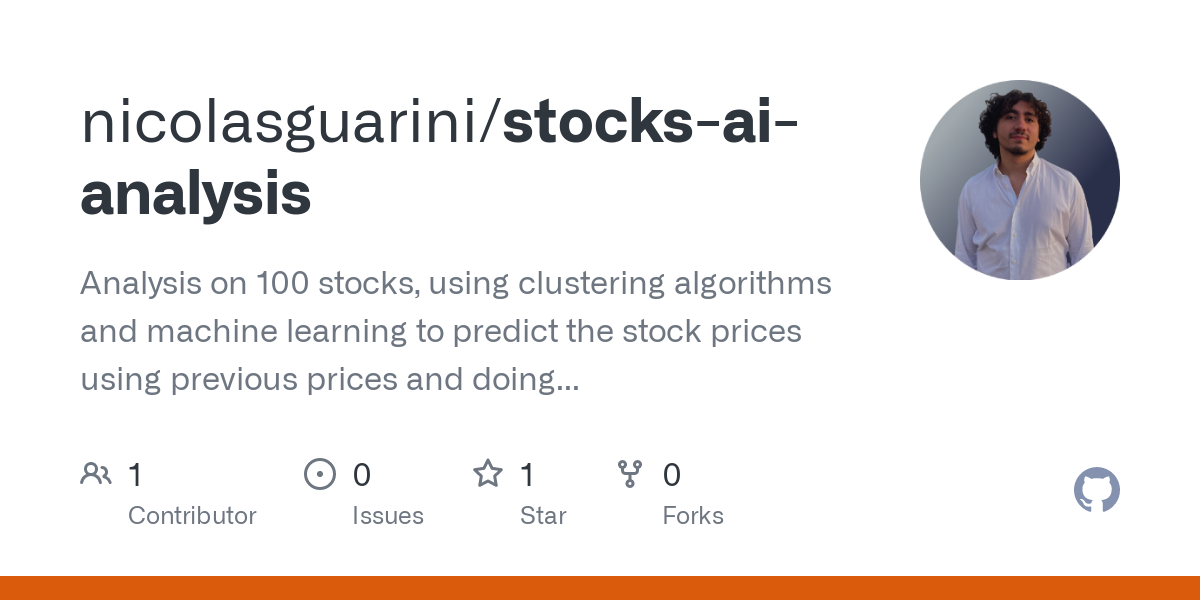20 Handy Facts For Choosing Ai Stock Trading
20 Handy Facts For Choosing Ai Stock Trading
Blog Article
Top 10 Tips On How To Begin Small And Increase The Size Gradually In Trading Ai Stocks From Penny Stocks To copyright
Start small, and then gradually expand your AI stock trades. This approach is great for dealing with high risk situations, like the penny stock market or copyright markets. This approach will enable you to gain experience, refine models, and manage risk. Here are ten top strategies to increase the size of your AI stock-trading operations slowly:
1. Begin by creating a Strategy and Plan
TIP: Define your trading objectives, risk tolerance, and target markets (e.g. penny stocks, copyright) before you begin. Start small and manageable.
Why: A clearly defined plan can help you stay focused, limit emotional decisions, and ensure your longevity of success.
2. Paper trading test
To begin, trading on paper (simulate trading) with actual market data is a great way to start without risking any real capital.
The reason: This enables you to test your AI models and trading strategies in real market conditions without financial risk and helps you find potential problems before scaling up.
3. Find a broker that is low-cost or exchange
Use a trading platform or broker that has low commissions that allow investors to invest in small amounts. This is extremely beneficial for those just beginning their journey into small-scale stocks or copyright assets.
Examples of penny stocks include TD Ameritrade Webull and E*TRADE.
Examples of copyright: copyright copyright copyright
How do you reduce transaction costs? It is essential when trading in smaller quantities. This will ensure that you do not eat the profits you earn by paying high commissions.
4. Initially, focus on a single class of assets
Begin by focusing on one type of asset, such as penny stocks or copyright, to make the model simpler and reduce the complexity.
The reason: Having a specialization in one area will allow you to develop proficiency and lessen the time to learn, prior to moving on to other markets or asset types.
5. Utilize small size positions
Tips Restrict your position size to a small percentage of your portfolio (e.g., 1-2 percent per trade) in order to limit your exposure to risk.
Why: This will minimize your losses while you build and refine AI models.
6. As you gain confidence as you gain confidence, increase your investment.
Tip: As soon as you begin to see consistent results, increase your trading capital slowly, but only when your system has proven to be trustworthy.
What's the reason? Scaling gradually allows you to build confidence in your trading strategy as well as risk management before making larger bets.
7. Concentrate on a Basic AI Model at First
TIP: Start with basic machine learning (e.g., regression linear or decision trees) for predicting prices for copyright or stock before moving onto more complex neural network or deep learning models.
Why: Simpler trading models are easier for you to maintain, optimize and understand as you begin your journey.
8. Use Conservative Risk Management
TIP: Use moderate leverage and strict precautions to manage risk, like a strict stop-loss orders, a limit on the size of a position, as well as strict stop-loss regulations.
Why: Conservative risk-management prevents massive losses in trading early in your career and ensures that you can scale your strategy.
9. Reinvesting Profits into the System
Tip: Reinvest early profits back into the system, to improve it or expand operations (e.g. upgrading hardware or increasing capital).
The reason: Reinvesting your profits will help you to increase your return over time. It will also enhance the infrastructure needed for bigger operations.
10. Review AI models regularly and improve them
Tips : Continuously monitor and improve the efficiency of AI models by using updated algorithms, improved features engineering, and better data.
Why? By constantly enhancing your models, you will ensure that they adapt to keep up with changes in market conditions. This improves your predictive capability as your capital increases.
Bonus: Following a solid foundation, consider diversifying.
Tip : After building a solid base and proving that your method is successful consistently, you can consider expanding your system to other asset classes (e.g. changing from penny stocks to more substantial stocks, or adding more copyright).
Why: Diversification helps reduce risks and boosts returns because it allows your system to benefit from market conditions that are different.
Beginning with a small amount and then gradually increasing your trading, you'll have the chance to master how to change, adapt and lay a solid foundation for your success. This is crucial in the highly risky environment of the copyright market or penny stocks. Take a look at the most popular copyright ai bot for site tips including ai penny stocks, ai trade, ai investing, ai investing, ai predictor, ai day trading, incite ai, ai copyright trading, ai stock analysis, ai trading and more. 
Top 10 Tips For Updating And Optimising Ai Stock Pickers Predictions, Investment Models And Predictions
It is essential to regularly improve and update your AI models for stock picks forecasts, investment, and predictions for accuracy. This includes adapting to market conditions in addition to improving overall performance. Your AI models should evolve with the changing market. Here are 10 top tips to assist you in updating and optimizing your AI models effectively:
1. Continuously Integrate Fresh Market Data
Tips: Ensure that your AI model is up-to-date by regularly incorporating the latest data from the market, such as earnings reports, prices of stocks macroeconomic indicators, as well as social sentiment.
AI models that aren't updated with new data can become outdated. Regular updates help keep your model in sync with current trends in the market. This increases the accuracy of predictions and flexibility.
2. Monitor model performance in Real Time
A tip: Keep an eye on your AI model in real-time to look for signs of underperformance or drift.
Why: Monitoring performance can allow you to detect issues such as model drift that occurs in the event that the precision of the model decreases as time passes. This provides the possibility of intervening prior to major losses.
3. Retrain models often using new data
Tips Retrain AI models with historical data on regularly (e.g. every month or once a quarter) to improve the performance of the model.
The reason is that markets change and models created using old data may not be as accurate. Retraining models allows them to learn and adapt from changes in market behaviour.
4. Tuning Hyperparameters for Accuracy
You can improve your AI models using random search, grid search, or other optimization techniques. Random search, grid search or other optimization techniques are a great way to optimize your AI models.
Why: A proper adjustment of the hyperparameters you use is essential to ensuring that your AI models work at their best. This will improve prediction accuracy, and aid in preventing overfitting (or underfitting) to historical data.
5. Explore New Features and Variables
Tip. Try out new options and sources of data (e.g. posts on social media, posts or other data) to improve model predictions.
What's the reason? The addition of new relevant features can help improve model accuracy since it gives the model access to more nuanced insights.
6. Use ensemble methods to improve your predictions
Tip. Utilize ensemble learning methods like bagging (combining multiple AI models), boosting or stacking (combining multiple AI models) to increase the accuracy of predictions.
Why? Ensemble methods are an effective method to boost the reliability of the accuracy of your AI model by leveraging multiple models. This reduces the chance of inaccurate predictions based upon the weaknesses of one or more models.
7. Implement Continuous Feedback Loops
Tip: Create an feedback loop in which model predictions and actual market results are examined and used to fine-tune the model on a regular basis.
The reason: The feedback loop allows the model to learn from its actual performance. It can identify biases and flaws in the model which need to be addressed in addition to enhancing future predictions.
8. Regular stress tests and scenario Analysis
Tip. Regularly test your AI models using various scenarios for market events including extreme volatility and crashes.
Stress testing is conducted to make sure that the AI model is able to cope with unusual market conditions. It helps identify weaknesses that may cause the model to perform poorly in extremely unstable or extreme market conditions.
9. Keep up with the latest developments in AI and Machine Learning
TIP: Make sure to be up-to-date on the most current AI techniques, algorithms, or tools. It is also possible to experiment with more advanced methods including transformers and reinforcement learning, into your own model.
The reason: AI, a field that is rapidly developing can enhance model performance and efficiency. It also increases accuracy and accuracy in stock selection as well as prediction.
10. Risk Management: Evaluate and adjust constantly
Tip: Assessing and refining the risk management components of your AI model regularly (e.g. stopping-loss strategies; position sizing; risk-adjusted-returns).
The reason: Risk management is crucial in the trading of stocks. Periodic evaluation ensures that your AI model is not only optimized for returns but also manages risk effectively with varying market conditions.
Bonus Tip: Track the market's sentiment and incorporate it into model updates
Incorporate sentimental analysis (from the media, social networking sites and more.). It is possible to update your model to take changes in the sentiment of investors and psychology.
What is the reason? Market sentiment has major influence on stock prices. Incorporating sentiment analysis into your model lets it respond to larger emotional or market mood changes which are not recorded by the traditional data.
The Conclusion
It is possible to keep your AI model in a competitive, precise, and adaptive by regularly improving, updating, and updating the AI stock picker. AI models that are constantly trained and refined with new data and also integrate real-time feedback along with the latest AI advances, will give you an edge in forecasting stock prices and investment decision making. View the top he said for ai trading app for site info including copyright ai bot, stocks ai, ai stock trading app, ai stock price prediction, ai stock predictions, ai penny stocks, ai penny stocks to buy, ai trading bot, ai for copyright trading, ai for trading stocks and more.